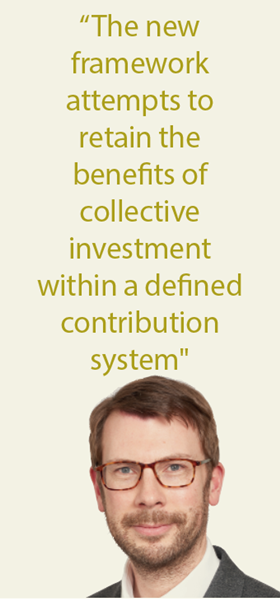For those who have been following the cumbersome multi-year saga of Dutch pensions reform, the latest wrinkle might seem trivial.
For those who have been following the cumbersome multi-year saga of Dutch pensions reform, the latest wrinkle might seem trivial.
The Dutch social partnership model – as in most other European countries – gives trade unions and employers a decisive say in areas like pensions policy. Union and employer umbrella groups were expected to ratify the pensions agreement, the final details of which were hammered out recently, ahead of a cabinet meeting on 19 June.
Except this didn’t quite happen according to the plan. In a chaotic online general assembly of the FNV trade union federation, the decision was delayed until early July due to a voting glitch. Correspondingly, the cabinet was unable to sign off the accord on the new system as planned.
The social affairs minister, Wouter Koolmees, described himself as “disappointed and irritated”. And so this chapter of the tale continues, for a while at least, with a chance that the lower house of Parliament may not be able to approve the package before the summer recess.
The Dutch nominally defined benefit system, which is in practice ‘defined ambition’ due to the variability of the pension promise, is overdue an overhaul. As a promotional video on the website of the Ministry of Social Affairs explains, it does not reflect the modern workplace where more frequent changes of employer, career breaks, part-time working and periods of self-employment are common.
The system’s current mandatory single rates of accrual creates intergenerational solidarity but in effect still means a transfer of wealth from younger generations to finance the older lives of retirees, as it does not allow younger members to take more risk.
The current supervisory framework leaves contributions, accrual and indexation subject to the regulatory solvency ratio of each pension fund. This prioritises a short-term focus on scheme solvency ratios, which has detracted from the important question of the long-term sustainability of the system.
The system also seems to leave everyone unhappy – a younger generation which thinks it is subsidising entitled baby boomers and an older cohort that thinks it isn’t getting out what it paid in because the promise is no longer pure defined benefit.
The new framework attempts to retain the benefits of collective investment within a defined contribution (DC) system with the final pension related to overall investment performance.
The current system is awkward and monolithic. The multi-year decision making process around its reform seems equally as byzantine and monolithic, and has exercised a stranglehold on the public debate on pensions by effectively limiting the parameters of discussion.
The leading Dutch pensions funds represent the ‘commanding heights’ of the public and private sectors – government service, healthcare, engineering, construction and financial services.
Much of the services sector is unrepresented in the upper echelons of Dutch schemes and falls outside traditional collective labour agreements. Here, DC pensions are growing, albeit from a small base. Some, like the Amsterdam-based navigation software specialist TomTom, already run a DC scheme with age-defined contribution levels.

Will the new system provide for the kind of flexibility that smaller, nimbler employers, employees and the self employed need? On the plus side, a collective approach to investments will retain scale and should allow for sophisticated asset diversification across public and private markets at an acceptable cost.
Within the overall collective there should be room for generationally appropriate investment approaches, allowing younger cohorts to take more risk and to taper this in the run-up to retirement. Contribution levels are already high enough to secure good levels of retirement income.
Important matters within the agreement were pending elaboration at the time of writing. In need of clarification are the precise replacement for the current average contribution system, as well as the transition of the old framework into the new, and precisely how to secure individual ownership rights in a collective system. There will also need to be clear rules and governance surrounding the proposed solidarity reserve, which is intended to smooth investment returns over time within the collective.
A core success component of the new system will be in its perception, not by a political and administrative class impatient to get the job of reform done, but by ordinary employees and employers.
One shortcoming of the current system is that many pension schemes are structurally in deficit. The new system will embed a kind of permanent surplus in the form of the solidarity reserve. How this surplus is accrued and distributed is likely to be a central focus within the new system. It should be clear and simple if the current intergenerational conflict is not simply to be substituted by a new one.
On current evidence, the Dutch pension reform process could yet turn out to be a ‘how not to’ guide to pension system design. A lot needs to be ironed out in this framework for it to be workable. In the end, the simplicity of a pure defined contribution system with clear ownership rights, however unpalatable to a socially-minded Dutch political class, might seem like the lesser of two evils. A chapter may have closed on the reform story of Dutch pensions but the tale continues.



















